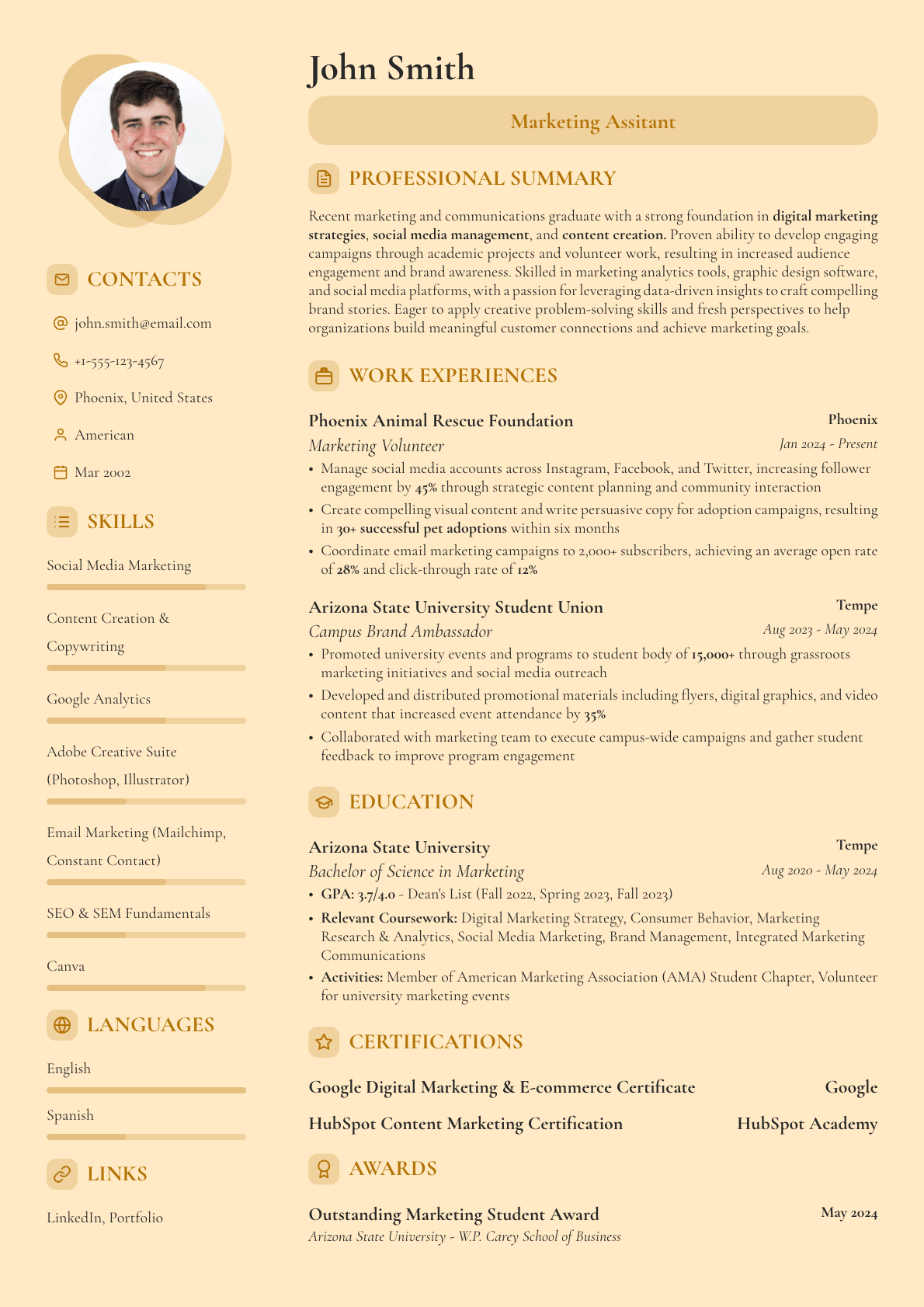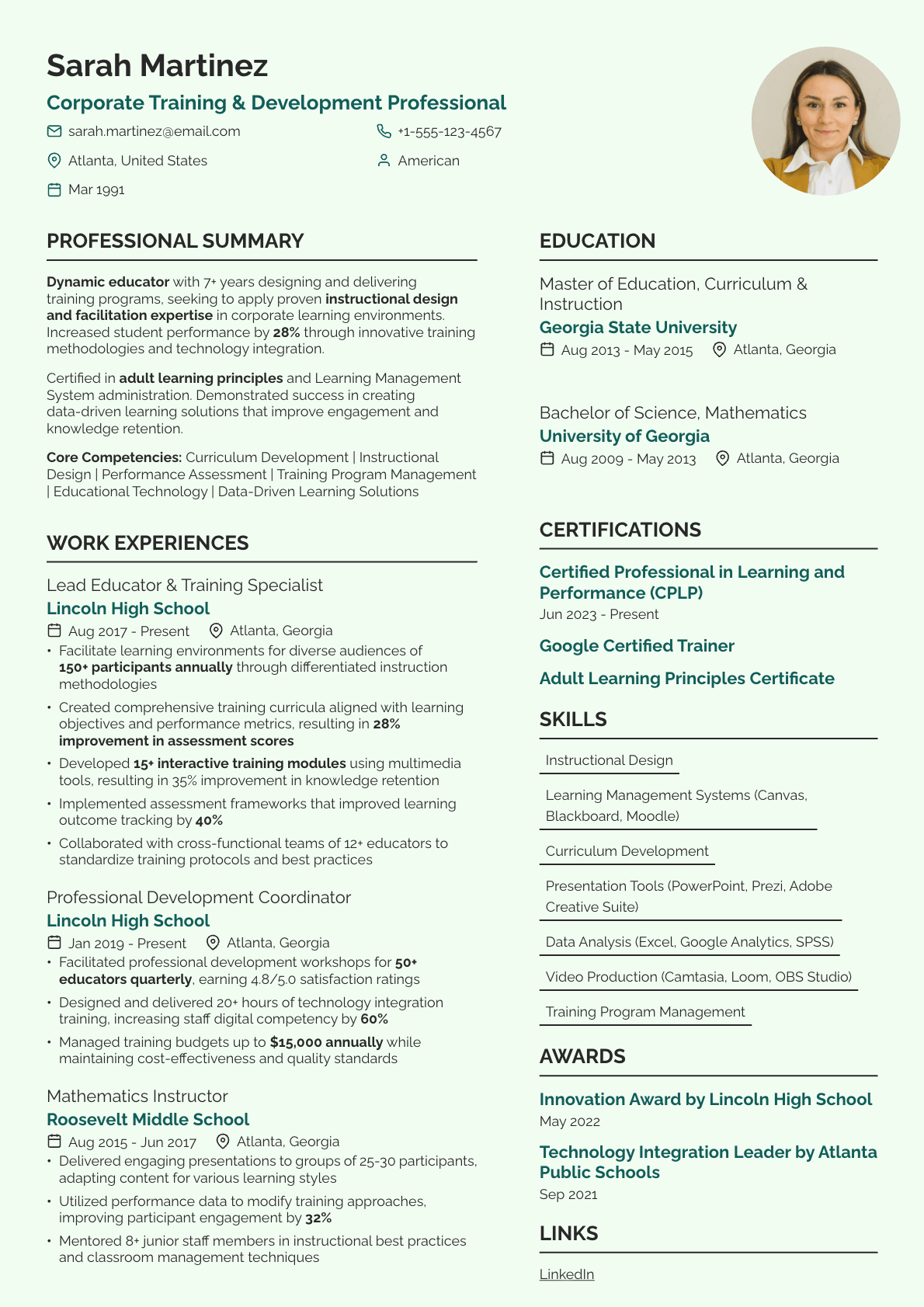A resume example, also known as a resume sample, is a completed resume crafted by either a past job seeker or a professional career advisor. At Enhancv, our resume examples combine both: some are created by our users, while others are prepared by our team of expert career counselors and resume writers. The main purpose of a resume example is to provide you with a clear understanding of how to craft, organize, and design your resume effectively. This includes guidance on layout, wording, and preparing a polished PDF file for download.
500+ Resume Examples
for Any Job or Industry in 2025
Explore more than 500 resume examples designed by industry experts and HR professionals to grab the recruiter’s attention and pass the ATS scan. You can analyze these for inspiration as you’re writing your own document or use them as templates to streamline the process, regardless of your career level or the industry you’re in.
Create my resumeEducation
Build the ideal teaching resume with our expert-crafted examples. Perfect for teachers, tutors, or professors looking to highlight their educational philosophy and classroom experience.
Technology
Craft a tech-savvy resume with our templates designed for the IT industry. Whether you're a software engineer, data analyst, or IT support, highlight your technical skills and project experience.
Marketing
Design a creative marketing resume with our customizable templates. Great for digital marketers, SEO specialists, and copywriters eager to showcase campaign success and brand strategy.
Engineering
Design a high-impact engineering resume for civil, mechanical, or electrical engineers. Highlight your technical skills, certifications, and engineering achievements.
Legal
Showcase your legal knowledge. Lawyers, paralegals, and legal assistants can highlight their casework and compliance knowledge.
Entertainment
Shine in the spotlight. Designed for actors, musicians, videographers, and creatives.
Skilled Trades
Find resume examples for skilled trades like electricians, plumbers, carpenters, and mechanics.
Examples of Resume Templates
Senior Data Scientist Resume
A great resume is a tailored resume. Proving your experience and skills match the position is crucial. Save time while you're at it with help from this resume template.
See this sampleMedical Resume
A great resume is a tailored resume. Proving your experience and skills match the position is crucial. Save time while you're at it with help from this resume template.
See this sampleSenior Software Engineer Resume
A great resume is a tailored resume. Proving your experience and skills match the position is crucial. Save time while you're at it with help from this resume template.
See this sampleMaster Plumber Resume
A great resume is a tailored resume. Proving your experience and skills match the position is crucial. Save time while you're at it with help from this resume template.
See this sampleMedical Assistant Resume
A great resume is a tailored resume. Proving your experience and skills match the position is crucial. Save time while you're at it with help from this resume template.
See this samplePerfect Resume Sample

- List your contact details the right way.
- Highlight your unique value with a list of skills...
- Highlight achievements to impress employers in your work experience.
- Showcase key accomplishments to make your education stand out.
6 Reasons Why You Should
Choose Our Resume Examples
Professionally Written Samples
Our resume examples are crafted by certified experts, tailored to modern hiring standards. Each sample provides clear, concise content that you can confidently adapt for your own use, ensuring a competitive edge.
Tailored by Industry
Every example is designed with industry-specific language and formatting. Whether you're in tech, healthcare, or finance, you'll find resumes that reflect the expectations of your target field.
Built to Inspire
Not sure where to begin? Our examples spark ideas for your own experience, helping you see how to present your background with clarity, confidence, and creativity.
Ready to Copy & Customize
Save time with content you can copy, tweak, and personalize. Each section offers reusable phrasing that’s optimized to grab attention while remaining authentic to your experience.
Aligned with ATS Standards
Our templates and wording are tested to pass Applicant Tracking Systems. You’ll never lose an opportunity due to formatting or keyword issues again.
Focused on Results
Every resume example is structured to highlight impact—quantifiable achievements, responsibilities, and results that help you stand out in a crowded job market.
Guide
Creating a professional resume has never been easier! With our examples and tips, you'll learn how to craft a resume that highlights your skills, experience, and achievements in a clear and effective way
How to Create a Professional Resume with Our Examples in 4 Easy Steps
Here are step-by-step instructions on how you can use our professional resume templates and examples to craft a job-winning document.
Step 1: Choose a resume example that suits you
When choosing a resume example, you want to pick the one that matches your industry and career level. For instance, an entry-level nurse resume will look significantly different than a senior business analyst resume. Therefore, we offer numerous career-specific resume samples to help you convey relevant information about your skills and experience.
Step 2: Personalize the content to reflect your skills and achievements
Choosing the right resume example is only half the battle, as you then need to personalize each section to optimally reflect your competence. So, you should prioritize customizing your summary or objective, work experience, and resume skills section. The abilities and accomplishments you include should be impactful and strictly relevant to the role you’re applying for.
Step 3: Use action verbs and show quantifiable results
Use memorable and industry-specific action verbs to make your accomplishments stand out in the eyes of recruiters. For example, terms like “conceptualized” and “implemented” can be rather catchy and engaging when used in moderation.
Furthermore, adding numbers and statistics to quantify your efforts will make them more concrete, turning unsubstantiated claims into proof of competence.
Step 4: Format and proofread your resume
While our resume samples are preformatted and you can use them without further customization, you can still follow our resume formatting guide to make adjustments if needed. Moreover, you need to carefully proofread the document before submitting it to correct any typos or mistakes, polish your writing, and demonstrate exceptional attention to detail.
Which Format Should You Use for Your Resume?
Which resume format you should use depends on your situation and qualifications. There are three established options that provide optimal information arrangement and structure to your document, and they are:
#1. Functional Format
The functional resume format is designed for job seekers with no professional experience. It’s a skill-focused format that is great for student resumes, recent college graduates, and other entry-level professionals, and many of our entry-level resume samples feature it.
By making skills the main section of the document, functional resumes allow candidates with no work history to present their key strengths. Keep in mind that some applicant tracking systems (ATS) can run into issues when scanning this format, and that it becomes less effective if you have a career history to showcase.
#2. Reverse-Chronological Format
The reverse-chronological resume format is the most common across the majority of industries and career levels, perfect for paralegal resumes and digital marketing resumes alike. It focuses on your work history to present your past jobs in the reverse-chronological order starting with your latest employment.
This creates a well-established resume structure that recruiters are used to. It shows them your career progress in an orderly fashion, giving them a good idea of your current skill level and experience. Additionally, most ATS-friendly resumes follow this format and it’s the most prevalent format in our experienced resume examples.
#3. Hybrid Format
The hybrid resume format combines the features of functional and reverse-chronological formats. It makes your skills the main section of the document, but it backs up each skill with work-related accomplishments listed as resume bullet points in reverse-chronological order.
This makes it perfect for experienced professionals who have gaps in their employment. It allows you to highlight your accomplishments and demonstrate your competence without emphasizing periods of unemployment.
Besides this, the hybrid format is great for resumes for a career change, helping emphasize transferable skills and accomplishments.
How to Optimize Your Resume for ATS
Here are five things you can do to optimize your resume for ATS and maximize your chances of passing the initial screening:
- Follow a proven format. Stick to the established formats, like the reverse-chronological one. Otherwise, ATS might run into issues parsing your resume.
- Don’t overuse graphics. ATS might be unable to extract information from complex graphical elements, like charts or tables. That’s why it’s better to have a text-focused resume design.
- Include relevant keywords. Your skills, accomplishments, and job title (among other information) act as resume keywords for the ATS. As a result, you should make sure that they match the requirements posted in the job description to ensure a successful scan.
- Submit the correct file type. Not every file type is compatible with the ATS. For instance, PDF resumes are commonly used as they preserve their formatting across different devices. However, you should check the employer’s instructions, as they can explicitly ask for other formats, like DOC or DOCX.
- Use both acronyms and full forms. Some words and phrases (e.g., job titles or certifications), are often used as both acronyms and full forms. You should include both in your resume to ensure the ATS recognizes your writing regardless of how it’s set up.
5 Critical Mistakes to Avoid When Creating Your Resume
Some of the most important resume writing tips are about what not to do and what mistakes to avoid. Here are the most critical mistakes to avoid:
- Not following a standard format. Using a standard format is imperative to help your resume pass the software screening. Moreover, HR professionals often skim through multiple resumes until one grabs their attention. If they don’t find what they want due to a bad format, they’ll move on to the next candidate.
- Not having a proper layout. The best resume layouts are clean, professional, and make the document easy to read. Having a visually busy resume with unnecessary graphics, an inappropriate font, or insufficient white space and margins can deter recruiters and make your document hard to scan.
- Not including all the mandatory sections. Contact information, resume summary or objective, work experience, education, and skills are must-have resume sections. They give recruiters the minimum necessary information they need to make a decision about your application, so you don’t want to omit any of them.
- Not matching your resume to the job description. Job-winning resumes highlight skills and experiences relevant to the job to present you as the most suitable candidate. A generic resume with irrelevant qualifications is not nearly as good at demonstrating that you’re the right person for the job.
Making your resume too long. Unless you have decades of experience or the employer explicitly asks for a longer document, your resume should be one page long. Otherwise, you risk recruiters skipping your application and moving on to candidates who presented their qualifications more succinctly.
Frequently asked questions about resume examples
Resume examples can help you understand the latest resume trends, show you how to highlight your achievements effectively, and offer guidance on formatting or style. By reviewing tried-and-tested samples, you can quickly identify what works well for specific roles or industries.
In 2025, resumes will likely continue to emphasize clarity, concise storytelling, and relevant skill sets tailored for the digital age. Recruiters may expect a modern layout, strategic use of keywords, and evidence of adaptability in fast-changing work environments.
Start by focusing on the key sections every employer wants to see: contact information, a summary or objective, relevant work experience, education, and core skills. Use bullet points to highlight achievements, tailor your language to the desired role, and keep formatting clean and consistent. Additionally, ensure the resume resonates with the specific job requirements.
We strive to provide resume examples that reflect current industry trends and employer preferences. However, the ‘best’ resume example ultimately depends on your unique situation, experience, and career goals. Always tailor your resume to the specific role and company for the greatest impact.
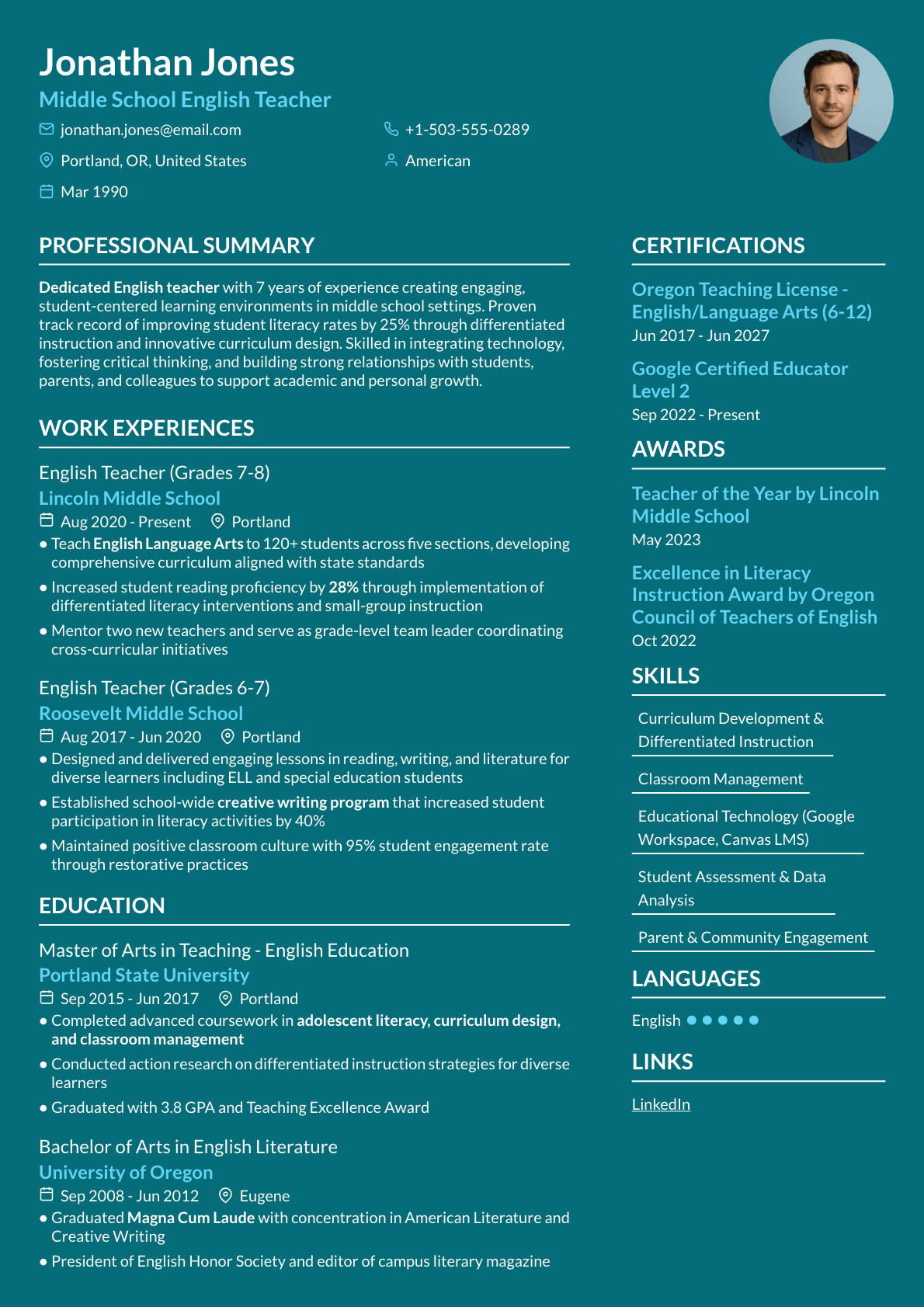

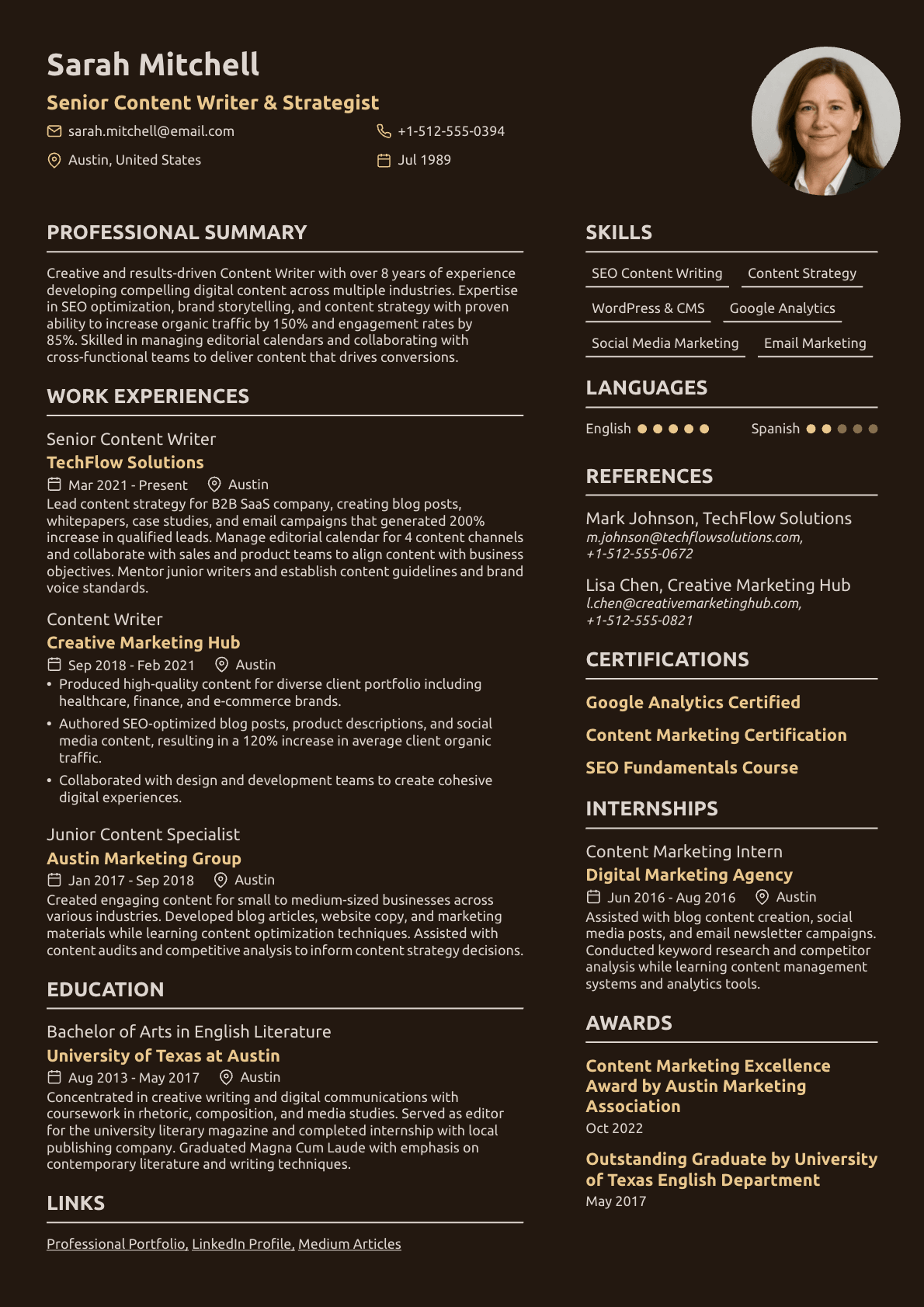

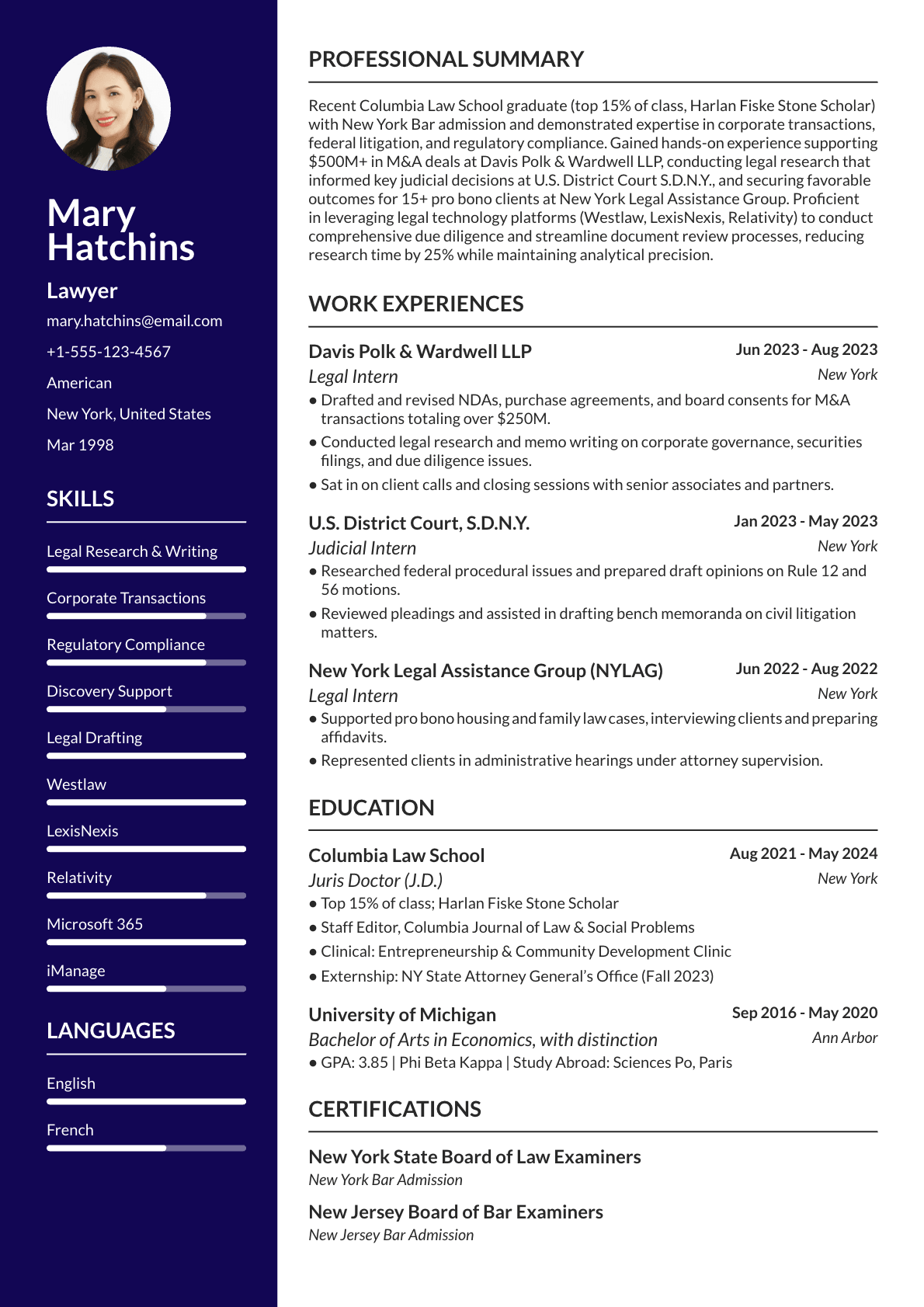
![How to Write an Actor Resume in 2025 [w/ Examples and Tips]](/_next/image?url=https%3A%2F%2Fcdn.sanity.io%2Fimages%2Fbcftoxbw%2Fproduction%2F8006f0b0797cc95fbcb4a51692c2d68c54a4db67-1190x1683.png&w=1920&q=95)
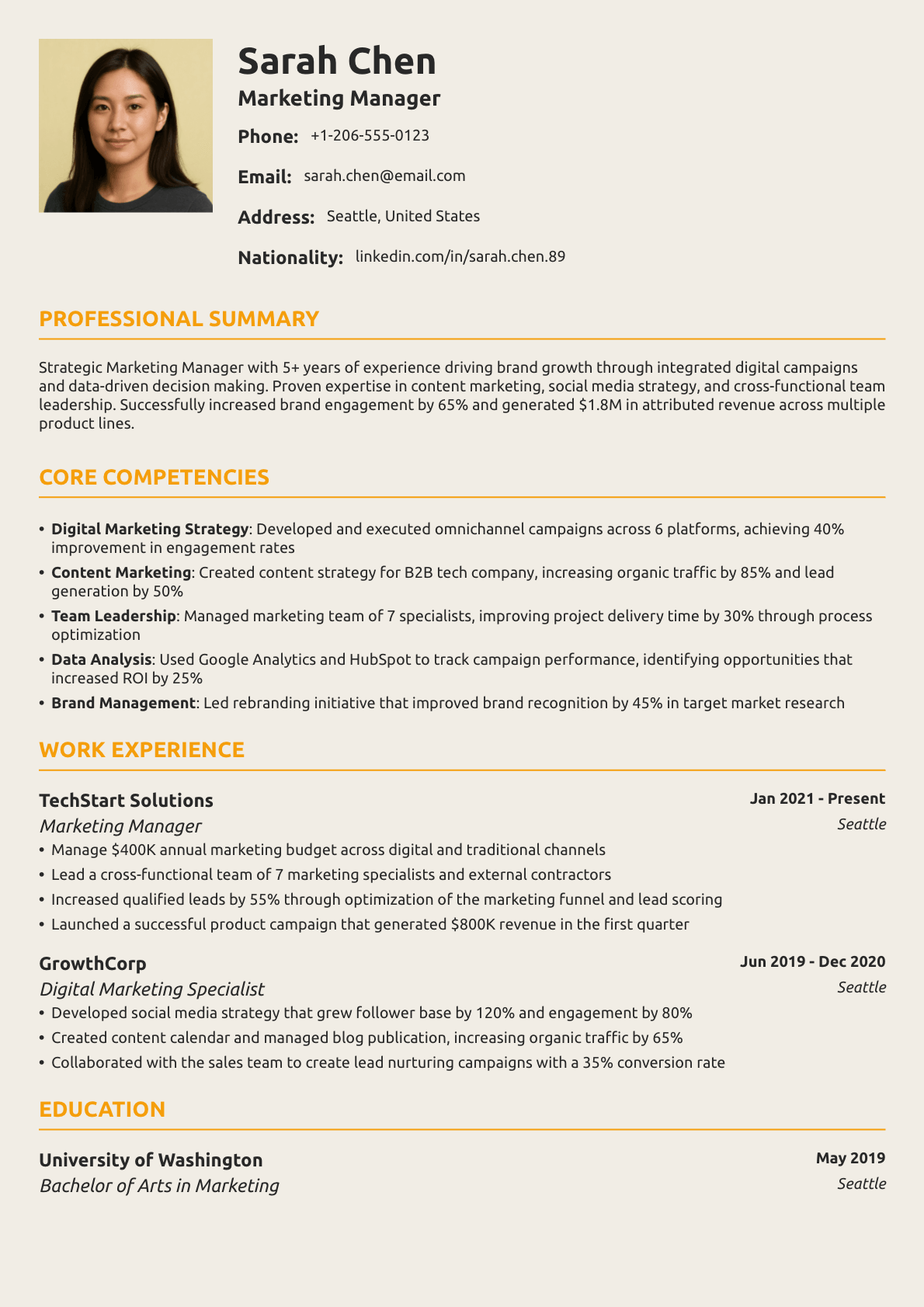
![Functional Resume 2025 Writing Guide [w/ Examples]](/_next/image?url=https%3A%2F%2Fcdn.sanity.io%2Fimages%2Fbcftoxbw%2Fproduction%2Fb2069c23bbe3aca3d1a960461cba2d457b800a1f-1190x1683.png&w=1920&q=95)
![Reverse-Chronological Resume Writing Guide [+ Examples]](/_next/image?url=https%3A%2F%2Fcdn.sanity.io%2Fimages%2Fbcftoxbw%2Fproduction%2Fbd6e32cd2887a53ce0f7ae8064a0def1ab585d64-1190x1683.png&w=1920&q=95)
